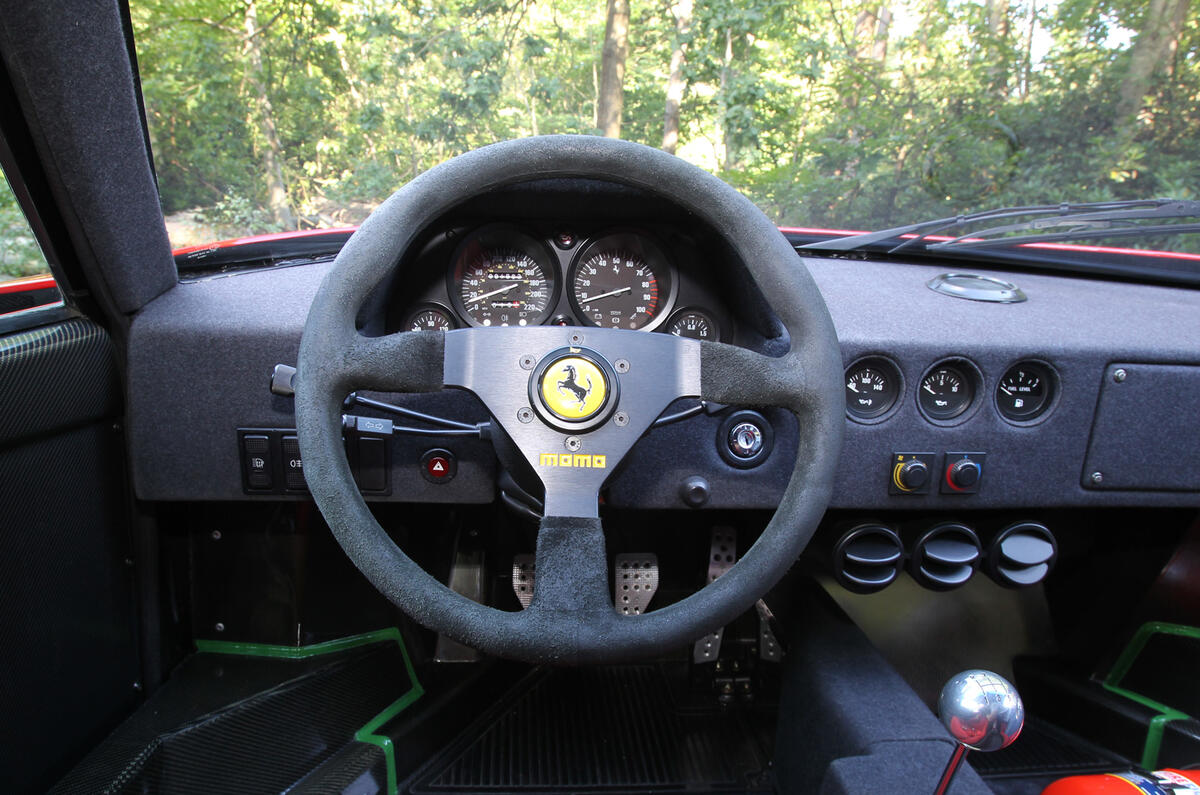The excellent steering wheel is, sadly, an endangered species.
Where it once roamed and rotated freely within the motor industry, it survives now solely in a few secure reserves, such as Dartford in Kent, Crewkerne in Somerset and Weissach in Germany.
It never used to be this way. Once, the excellent steering wheel – clean of design, round in nature and thrice-spoked – could be found everywhere.
Yesterday I was in the Autocar archives, when it struck me just how common the excellent steering wheel once was. From hot Ford Sierra to Ferrari F40, there was a good chance that any driver’s car had an excellent steering wheel, because it was a time when they were still organically-designed and singly purposed, before they were intensively farmed to squeeze more muscle, bulk and function from this most fundamental of car control devices.
So, what happened? First, the airbag, of course, striking through the steering wheel community with the viciousness and indiscrimination of ash dieback disease.
But it wasn't the airbag's fault alone. Fixing the airbag problem was simply an enabler for designers and engineers. It raised our awareness of what a steering wheel could be. Soon enough, a solution to massive airbags had been engineered and with it came a belief in our own cleverness. We'd conquered the massive airbag threat, making them pretty yet still have an explosive balloon in their midst. If we could make airbags very small and still go off at the right time, we could do anything. For the first time, we saw the steering wheel’s true potential. We saw it as an exotic, in the way the Victorians saw the grey squirrel.
The excellent steering wheel would never thrive again.
First came the volume control – a simple extension of wiring already installed for a horn. Harmless enough, surely? If only we knew.
We should have seen the path that lay ahead of us, then. A path that, as the difference between a Ferrari F40 and an F12 shows, is one of true ruination. After volume control came the option to station flick and control the cruise. And when electronics, rather than just electrics, arrived, that finished things.
Only then did we realise: no wheel looked or felt dynamic. The feel had gone. The excellent had gone. The appearance would have to be designed back in.
I’m reluctant to apportion blame, but I think Audi’s Audi R8 struck first. Racing cars have flat-bottomed wheels. So why not road cars? It’ll make them look racy, somebody thought. Curse that nugget of an idea in a designer’s brain, curse the planning meeting where it was signed-off, that would forever render the most sporting cars’ steering wheels un-round in some kind of effort to compensate for their bulk and ugliness.








Join the debate
Add your comment
STEERING WHEELS
I think the fact all cars now have to have an airbag & buttons to control everything is the issue & it's also one that is now so far down the line, that the likes of a Momo prototipo are but a distant memory.
I still pedal a 1994 968 club sport as my regular drive & it has the best 'in hand' wheel I've had the pleasure of using. Decent fatness, scalloped sections at 3 & 9 o'clock & 1 button thats the horn.
Above & beyond the wheels mentioned above, I think the Light Car Company Rocket's wheel deserves a mention here. It is a plain leather bound wheel with 3 spokes & surely the coolest logo to grace a steering wheel ever.
Thoughts?
Flat-bottomed wheels
"Racing cars have flat-bottomed wheels. So why not road cars?"
The Austin Allegro got pilloried for just that.
steering wheel
I think a modern car where you replace the naff plastic wheel with a nice wheel like a prototipo will mean the car fails its MoT. I always need a fat wheel rim.
Though remember very old cars had wheel controls for trafficators (indicators, son) and the advance-retard and possibly a hand throttle.